Sevilla Catedral
Sevilla Catedral is the most iconic landmark of the Andalusian capital. A jaw-dropping masterpiece. Let’s learn a bit more about this architectural wonder, so much intertwined with the history of Seville.
The Moorish dynasty of the Almohads conquered Al-Andalus in 1147 and makes Sevilla its capital. In 1172 Caliph Abu Yaqub orders the construction of a grand Mosque, the greatest Sevilla had ever seen, at the place where the present Catedral sits today. Abu Yaqub is succeeded by his son Abú Yusuf Yaqub who orders the erection of the minaret (tower) of the mosque (now Giralda) in 1184. In 1198 the minaret of the Sevillian mosque is inaugurated after it is crowned by the “yamur” (4 golden spheres).
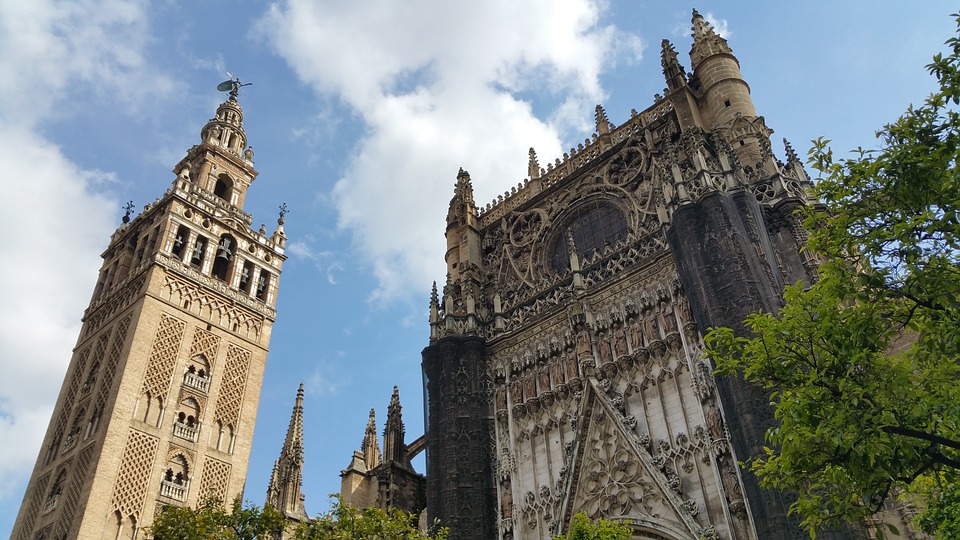
At the end of 1248, the Arab emir of Sevilla surrenders the keys of the city to the Christian conquistadores. Immediately the Grand Mosque submitted the needed changes for the mosque to serve as the church of Santa María. In 1251 the church is dedicated to the Assumption of Mary and becomes the cathedral of the city. A year later King Ferdinand III is buried in front of the altar of the Chapel of the Kings. In 1254 the Cathedral’s Chapter creates the General School of Latin and Arabic or Colegio de San Miguel, the origin of the Seville university. In 1356 an earthquake knock down the yamur which is replaced by a belfry and the first public clock in Seville in 1400.
In 1401 with Seville without an archbishop, the canons decided to build a new cathedral. In 1432 the remains of the kings are transferred from the Royal Chapel to a chapel in the Patio de Los Naranjos and The king authorized the demolition of the Royal Chapel. That was the beginning of the construction of the current Cathedral which was inaugurated in 1507.
Four years later however the primitive dome that covers the transept of the Cathedral collapses. A great part of the work in the interior of the church would be completed in the period between 1520 and 1592 while the work at the Giralda was already completed by 1568.
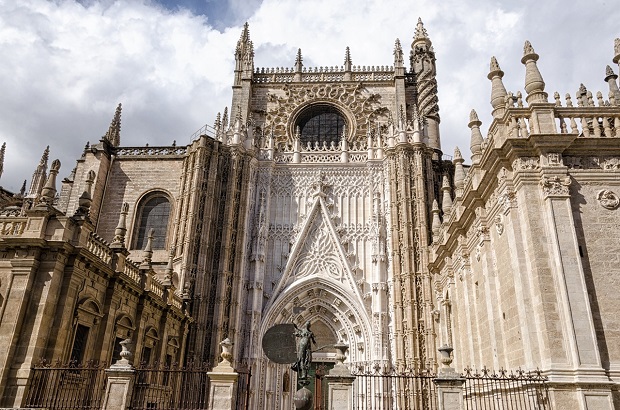
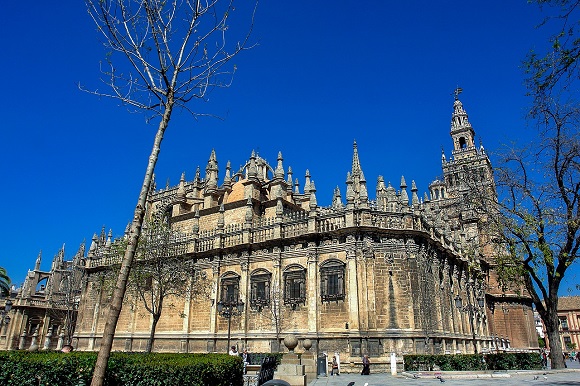
Today the massive Cathedral of Saint Mary of the See is the largest and one of the most impressive Gothic churches in the world. The most striking exterior features of this UNESCO-designated monument are considered to be the Gate of the Assumption, the Gothic masterpiece that had remained unfinished until the mid-19th century, and the Gate of the Conception which was also completed in the 19th century.
The undeniable success of both works is the perfect integration of the Cathedral’s mosaic of architectural elements. Inside the temple, the Main Altarpiece of exceptional artistry is still considered to be the largest in Christendom. The Chorus is an astounding mixture of Renaissance – Mudejar and Gothic styles, a fine compilation of mastery and harmony.
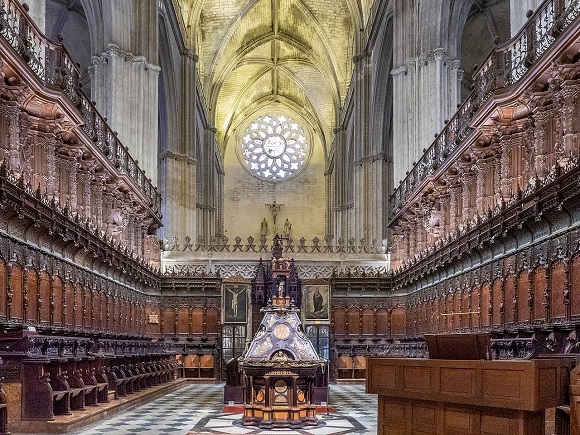

Separate mention must be given to the Giralda, the beautiful Moorish tower that was built by the Almohad dynasty as the minaret of their Grand Mosque and was many years later revamped in Renaissance style to serve the needs of the Christian city. Today almost 100-meter-tall tower offers great views of the historic center. The 10 to 15 minutes climb up the stairs is definitely worth your effort.
Last but not least, the Biblioteca Colombina on the east side of the Patio de Los Naranjos, the orange grove that sat at the entrance of the old mosque. The library was created by Don Hernando Colón, son of the famous Christopher Columbus, a great Spanish bibliophile, and humanist.
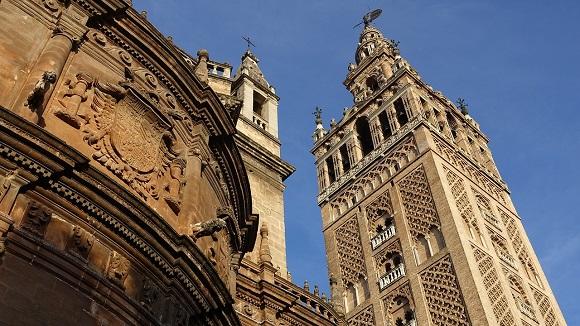

The Capitular and Colombina Library is considered to be the most important in the city of Seville; Two collections can be distinguished: the capitular made up of more than 100,000 volumes collected over the centuries by the Church of Seville, and the Columbian, which derives from the large legacy of the Admiral’s son. More

